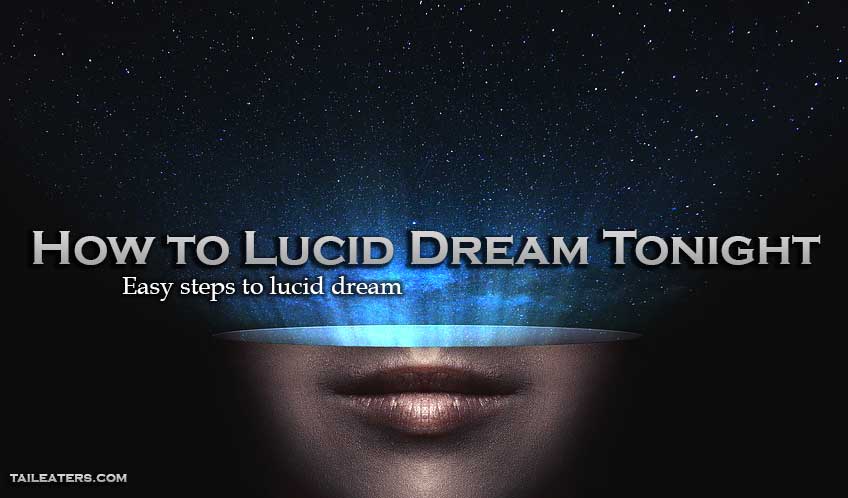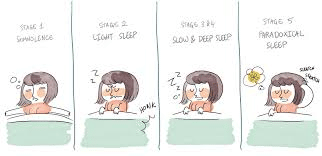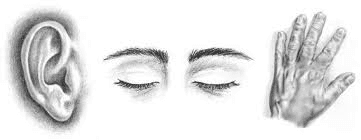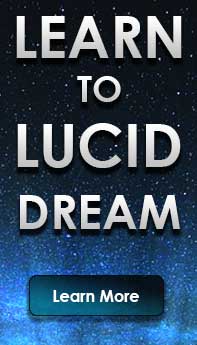
How to Lucid Dream Tonight
Most everyone will experience at least one naturally occurring lucid dream in their lifetime, and it usually results in the dreamer being ripped from a said dream as their mind snaps them back to reality. For others, though, a lucid dream can be an intoxicating and rejuvenating experience, wherein they can shed the restraints of reality and take the world into their own hands to mold as they see fit. Now, if you are among the many who haven’t been graced with the natural ability to lucid dream with ease, hearing about the awe-inspiring experiences of those who can, might leave you wondering how you can experience it for yourself.

Fortunately, some numerous techniques and methods can be found online and in books, which can help you reach that desired state of mind. There is one particular technique that is currently growing in popularity, thanks to the overwhelming reports of success, and it’s apparent ability to be “Idiot-proof.” Developed and refined by Gary Zhang (Cosmic Iron) in 2013 to help teach lucid dreaming on a Chinese forum, Senses Initiated Lucid Dreams -or SSILD- is one of the most straightforward techniques out there today. And in a study recently conducted at the University of Adelaide by Dr. Denholm Aspy, SSILD was found to be highly effective in inducing lucid dreams.
SSILD was designed to be simple and easy to use technique. It is perfect for beginners, as it requires little effort, and no previous experience with lucid dreaming, meditation or any other mental practices, though they don’t hurt. The technique is also known to be one which the results from won’t ‘fade’ over time. No matter how often you perform SSILD, the results should remain relatively constant, if not improving. The idea is to show that lucid dreaming is more of an “art” rather than a “technique,” and it leaves little room for interpretations or improvisation. The key is to follow the steps, and the trick is not to try too hard.
The main element in SSILD is the ‘Cycle.’ The Cycle consists of 3 steps, and it’s the repetition of the steps that helps influence your state of mind to be one that is ideal for a Lucid Dream. This technique is similar to the WBTB (Wake Back To Bed) technique, in that it requires the practitioner to wake up during their REM sleep cycle. Despite common belief, you are harder to  wake up when in the REM stage of sleep. If you are woken during this stage you’re more likely to fall back into it, should you return to sleep. SSILD is designed to help you stimulate your senses and brain while in NREM (Non-Rem) Stage 1, which is when you experience hypnagogic hallucinations and sensations, out of body experiences, and sleep paralysis. By waking you during your REM stage, and then returning to sleep with a heightened awareness of your senses, you vastly increase your chances of having a lucid dream.
wake up when in the REM stage of sleep. If you are woken during this stage you’re more likely to fall back into it, should you return to sleep. SSILD is designed to help you stimulate your senses and brain while in NREM (Non-Rem) Stage 1, which is when you experience hypnagogic hallucinations and sensations, out of body experiences, and sleep paralysis. By waking you during your REM stage, and then returning to sleep with a heightened awareness of your senses, you vastly increase your chances of having a lucid dream.
The Process
- Set an alarm (4-5 hours)
- Get to bed early
- Get out of bed at alarm (5-10 minutes)
- Return to bed, begin warm up Cycles (4-6x, only a few seconds)
- Perform actual Cycle (3-4x, 30 seconds)
- Fall back asleep
To begin, you’ll want to set an alarm to go off 4-5 hours after you fall asleep. You don’t want this alarm to be jarring or startling, so pick a tone that is on the softer side, but make sure it will still wake you. After making sure you set your alarm, you can head to bed. Ideally, you will want to be in bed before 11 pm. Upon waking from your alarm, you will want to get up and try to stay up for about 5 minutes or so. During this time you might go to the bathroom, or get a drink before returning to bed. Try to avoid becoming too alert or waking up fully during this time.
From there you can go back to bed, it’s recommended that you lay back in a comfortable position that is not your usual sleeping position. This helps prevent you from immediately falling back asleep; however, if you’re someone who already has a hard time getting to sleep, then you may want to stick with your usual position. Once you’re comfortable in bed, you can begin performing the Cycle.
As I mentioned before, the Cycle consists of three steps: Focusing on sight, focusing on hearing, and concentrate on touch.
 Sight: Start by closing your eyes and paying attention to the darkness behind your eyelids. Don’t focus too hard, though; you don’t want to strain your eye muscles. In fact, you should be relaxed, and your eyeballs should be resting during this time. Don’t attempt to spot any visuals, and don’t expect to see anything. It’s okay if you do, but don’t focus on any particular spot, relax, and observe. If you don’t see anything, don’t worry. Just move onto the next sense in the Cycle.
Sight: Start by closing your eyes and paying attention to the darkness behind your eyelids. Don’t focus too hard, though; you don’t want to strain your eye muscles. In fact, you should be relaxed, and your eyeballs should be resting during this time. Don’t attempt to spot any visuals, and don’t expect to see anything. It’s okay if you do, but don’t focus on any particular spot, relax, and observe. If you don’t see anything, don’t worry. Just move onto the next sense in the Cycle.
Hearing: Remaining relaxed, you will next draw your attention to your ears. Take notice of any external sounds you hear, but again don’t focus on them. If the room you’re in is quiet enough, you may be able to listen to the sound of your breathing or of your heartbeat. It is important not to strain your ears, or to search for sounds, and don’t focus on any sounds you hear. If you don’t hear anything, that is just fine! Just relax and listen to your breathing.
Touch: You will then direct your attention to the rest of your body. Focus passively on how your body feels, and take note if there are any points of tension or unusual sensations, such as lightness, heaviness, or the sensation of spinning or falling. If you don’t feel any of these things, again don’t worry. Just feel the heaviness of the blanket, softness of your pillow, or even the temperature in the room.
It is the repetition of these steps which stimulate the senses and allows SSILD to coax your mind and body into a state which is ideal for lucid dreams to occur naturally. One of the most common mistakes made by beginners, or anywho who is new to this technique, is “trying too hard.” It is not something you can force, and the more conscious effort you put into it, the less likely it will be that you will experience anything. Often beginners strive to see, hear, or feel something, and when nothing happens, they get discouraged and desperate. But truthfully there is no need for that, all that is required is patience and practice!
Learn to Lucid Dream and Gain Rewards
![]()
Learn to lucid dream and complete tasks for re-life rewards.
So once you’re back in bed and comfortable, you can begin with the Cycle. Initially, you may want to go through a warm-up of sorts. Start by performing your first Cycle 4-6 times, with each step lasting only 5-10 seconds. Once you have a feel for how it works, you can start going through the Cycle at a slower pace.
When you’ve finished with the 4-6 warm-up Cycles, it’s time to move on to the real thing. Start performing the Cycles for about 30 seconds each. You’ll want to repeat this last step 3-4 times. This is an essential step, as your mind is in the ideal state for a lucid dream. It is crucial that you refrain from counting the seconds during your Cycles. Try just to let the time pass, and move onto the next scene after a sufficient period.
During the slow cycles, it is not uncommon for people to be distracted by random thoughts. If this happens to you, don’t worry, this is an indication that you are close to falling asleep. You shouldn’t try to suppress these thoughts, instead just let them carry you off and out of reality. You may, from time to time, become alert or realize that you have lost track of your practice. When this happens, don’t worry. Just start the cycle from the beginning.
At this point, you can return to your usual, comfortable, sleeping position if you haven’t already and let sleep overtake you as quickly as possible. The quicker you fall asleep, the better. One thing that I cannot stress enough is that all of this must be done without any expectations. Lucid dreams are a natural thing, and it is not something you can force along. You have to try to remain passive about the whole thing. Shift your attention from one sense to the next.
Reality Checks
Now, before we dive into what comes next, we should talk about the necessity of reality checks. They are exactly what they sound like, little tricks which can help you realize if you’re awake or dreaming. You may be wondering why you need reality checks in the first place. That’s because a dream only feels like a dream after you’ve woken up. It seems real enough while you’re in the middle of it, and you can’t trust your normal senses to distinguish dream from reality on their own.
To be able to lucid dream, you have to be able to tell the difference between the real world and a dream. The trick is to start doing reality checks in your day to day, waking life. Eventually, you will begin to do them in your dreams as well, and this will help your conscious mind recognize that you are dreaming. There are numerous reality tests which you could turn to, depending on what works best for you. Start by genuinely asking yourself, “Am I dreaming?” And then initiate your reality checks. It’s best to do at least two, to be sure. Some of the more popular reality checks include:
- Breathing- Can you hold your nose and mouth shut and still breathe?
- Jumping– When you jump, do you float back to the ground?
- Reading– Can you read the same sentence twice without it changing?
- Look– Is your vision clearer or blurrier than usual?
- Hands- Can you push your hands through a solid surface?
- Time- Can you read a clock face or digital watch?
- Flying- Can you will yourself to fly or hover above the ground?
- Palms– Do the palms or your hands look normal close-up?
- Mirrors– Does your reflection look normal in a mirror?
- Math- Can you add up two numbers correctly?
Another popular reality check is to take the first two fingers on your right hand and try to press them through the palm of your left hand. When you do this, be sure to ask yourself first if you are dreaming, and when you put this into practice, you should expect your fingers to move through your palm. That is the key to reality checks, and you have to ask yourself if you’re dreaming or not genuinely, and also to do them periodically throughout the day so that eventually you will start to encompass them into your dreams.
What Follows Sleep?
There are several possibilities which could follow; a common experience is that of Hypnagogic sensations. Hypnagogia is experienced in the transitional state from wakefulness to sleep and is usually characterized by the sensation of falling, floating, seeing lights and images, hearing sharp sounds, etc. If you experience any of these sensations, it’s a decent indication that you are either already dreaming, or you are very close to doing so. Hypnagogia is often experienced during the Cycles, and it is not uncommon for someone to be started awake by an overwhelming and intense hypnagogic sensation. If this should happen to you, try not to become excited. Make a note of the experience and let the sensation either amplify or fade.
 Another common experience which has been reported by dreamers who practice SSILD is False Awakenings. False Awakenings are exactly what they sound like, and SSILD has been known to cause them quite often. This is because typically your dream will start in your bedroom, because you have been focusing on the sounds and feel of our surroundings. Often what happens is that the dreamer will “wake up” in their bed, not having a lucid dream or any dreams at all possible. Feeling disappointed you try getting out of bed, only to wake up again and realize it was all a dream! This is where the importance of reality checks come into play. You should get into the habit of going through your reality checks every time you wake up, especially if you’re doing SSILD.
Another common experience which has been reported by dreamers who practice SSILD is False Awakenings. False Awakenings are exactly what they sound like, and SSILD has been known to cause them quite often. This is because typically your dream will start in your bedroom, because you have been focusing on the sounds and feel of our surroundings. Often what happens is that the dreamer will “wake up” in their bed, not having a lucid dream or any dreams at all possible. Feeling disappointed you try getting out of bed, only to wake up again and realize it was all a dream! This is where the importance of reality checks come into play. You should get into the habit of going through your reality checks every time you wake up, especially if you’re doing SSILD.
Another possibility with this is that you fall asleep during a Cycle, and immediately fall into a False Awakening and feel the onset of insomnia. Some dreamers have reported that SSILD was causing them to lose sleep, only to learn later that they were performing the SSILD cycles in their dreams.
SSILD will cause you to fall asleep with heightened awareness, which is how you’re able to spot abnormalities in your dreams, and become lucid. A lucid dream induced this way is also known as DILD, or Dream Initiated Lucid Dreams. This is generally how spontaneous, natural, lucid dreams occur, and the dreamer will suddenly gain a random sense of heightened awareness and become lucid.
Or you could wake up after going through your Cycles, and upon doing a reality check, you find that it is still the real world. If this should happen, don’t worry! You still have plenty of chances to try again. Just relax, let your head sink back into your pillow, and do a few more, medium-paced Cycles. There is a good chance you might experience a hypnagogic sensation during this stage, but if not, that is also just fine. After you finish your few extra Cycles, go back to sleep. Your chances for lucid dream increase this second time around, and it is not a bad idea to do a few extra Cycles the first time around either.
And with that, you have the ultimate beginners trick to lucid dreaming! The magnitude of reports from first-time dreamers show that it is truly one of the best, and easiest techniques developed thus far.
Citations:
Apsy, D. (2017) Studies for the Development of Effective Lucid Dream Induction Techniques. Received from The University of Adelaide.
Turner, R. How to Use Reality Checks to Have Lucid Dreams. (https://www.world-of-lucid-dreaming.com/reality-checks.html)
Zhang, G. (2013) Senses Initiated Lucid Dream (SSILD) Official Tutorial. (http://cosmiciron.blogspot.com/2013/01/senses-initiated-lucid-dream-ssild_16.html)
Cachet is an early 20’s freelance writer out of the US Midwest. Along with a longstanding passion for writing, she has a great interest in the psychedelics, states of consciousness and the human psyche. Her main interests are in the different dream states, and their influences on the mind, as well as alternative pharmaceutical uses for certain psychedelics.
Join the Discussion
Want to discuss more about this topic and much more? Join our discussion group online and start exploring your consciousness with others like yourself



Recent Comments